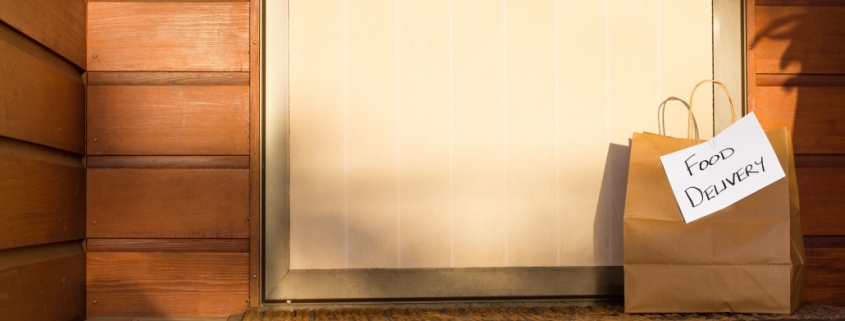SIMPLE SOLUTIONS TO PROTECT DELIVERY EMPLOYEES AND CUSTOMERS
‘Following the outbreak of COVID-19, the food service industry has rapidly refocused its efforts to bolster delivery and pick-up orders. As the customer relationship moves online and at their doorstep, safety measures must be put into place for both delivery teams and consumers.’ BARE shares an article by Christine Schindler for Fast Casual on simple solutions that protect delivery employees and customers.
‘According to Uber Eats, the hardest-hit areas such as large cities and urban settings, have seen the highest demand for delivery services while in some areas a surge in grocery shopping has led to a reduction in delivery orders.
COVID-19 is primarily spread person-to-person through respiratory droplets when an infected person coughs or sneezes. When delivering or receiving food, most of the risk can be eliminated through a contactless delivery.
While traditional package carriers like UPS, FedEx, and USPS have used this standard for years, more food delivery companies have embraced contactless delivery since the outbreak began. Services such as Doordash, Uber Eats, Grubhub, and most pizza chains have started to include or default to this option during checkout.
HOW DELIVERY WORKERS CAN PROTECT THEMSELVES AND THEIR CUSTOMERS
Most importantly, delivery employees should not be working if they are experiencing any flu-like symptoms. Couriers can reduce their risk of contracting the virus or spreading it by washing or sanitizing their hands thoroughly and often. Couriers should wash their hands with soap and water for 20 seconds or use a generous amount of hand sanitizer to fully cover both of their hands, and rub it in until dry— this should happen between each delivery.
Aside from protecting the customer, it’s also vital the delivery worker isn’t exposed to a symptomatic individual, ultimately leading to spreading the virus further throughout their shift.
When picking up a package, couriers should try to avoid touching surfaces, countertops, and doorknobs during a pick-up or drop off.
If touching any surface, they should refrain from touching their face or eyes until they have had a chance to fully wash their hands or use hand sanitizer.
WHAT TO KEEP IN MIND WHEN ORDERING DELIVERY
Customers should pre-pay to eliminate any need of a transaction at the point of delivery. Options like “leave it at my door” delivery method eliminates any risk that either the delivery person or consumer might cough or sneeze near each other.
After receiving the delivery, customers should wash hands with soap and water for 20 seconds. Some tactics for effective hand washing are scrubbing areas where contamination is most found like around wrists, under fingernails, in the webs of hands, and removing any jewelry during the hand wash is necessary to ensure you’ve eliminated the virus.
Even if there is no contact during the delivery, both parties should still wash their hands before eating or making the next food delivery— this is also creating a habit, and reinforcing the idea that each time food is prepared, consumed, or handled it should be done after performing the required hand hygiene protocols.
A recent study by the USDA, found that 97% of consumers are failing to properly clean their hands before eating, an unnerving amount that will hopefully diminish with the focus COVID-19 has brought to hand washing.
Restaurants have long had hand washing and safety protocols in place. Staff are trained in proper hand hygiene, and are expected to fully wash their hands before and after any task, if they touch their hair or face, and at minimum time intervals. Many brands use technology-based solutions or additional management resources to ensure effective hygiene and hand washing processes are in place across their locations.
With this in mind, food should be safe as it is packaged from the restaurant.
Another precaution consumers can take to ensure the outside packaging is safe from the delivery process is to wipe down the food packaging, or to discard it immediately after removing the food and placing it on their own dishware, then completing a full 20-second hand wash.
In the coming weeks and months, restaurants will continue to be one of the most affected industries by coronavirus, meaning it’s more important than ever to support your favorite businesses. By taking the proper precautions both consumers and delivery teams can stay safe.’
Read the original article here.
For more information on how we can help you measure your food service safety standards, BARE is offering FREE sanitation audits for all restaurants and food delivery services. Find out more here!
Disclaimer of endorsement: Any reference obtained from this article to a specific product, process, or service does not constitute or imply an endorsement by BARE International of the product, process, or service, or its producer or provider.




Leave a Reply
Want to join the discussion?Feel free to contribute!